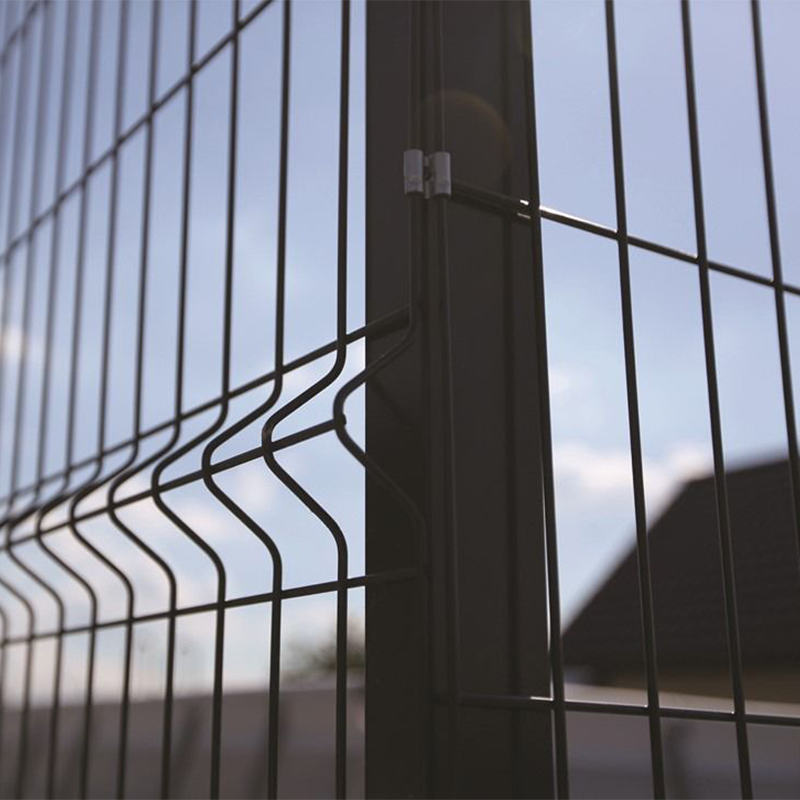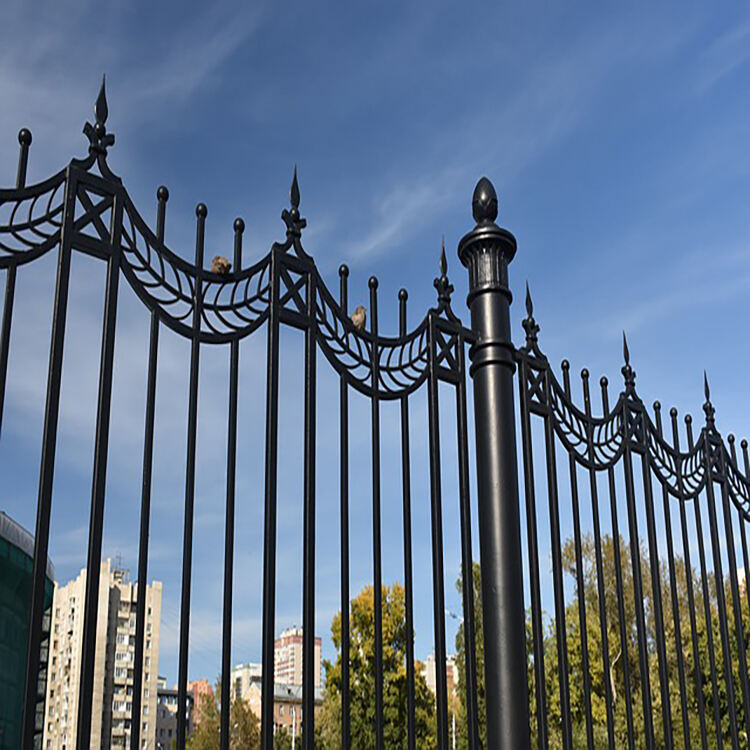Types of Traffic Control Barrier Systems
Concrete Barriers (Jersey & F-Shape)
jersey and F-shape concrete barriers such as they are often referred to are well known for their sturdy construction and traffic control flexibility. Such barriers are commonly employed along highways and in urban areas to prevent automotive crossings and promote safe roadways. They have many advantages, such as high durability and weather resistant, so it can be used for long time. Studies completed by transportation agencies have indicated that the barrier's introduction has resulted in a dramatic and rapid reduction in the number of vehicle intrusions, and hence accidents, in many locations.
Water-Filled Plastic Barriers
Water filled barrier are a lightweight and portable solution for managing temporary traffic water filled barrier. Their portability and rapid deployment makes them popular at construction sites and public events. These barriers can be filled with whatever you like, water, sand to increase weight for added stability during use. They are highly competitive with other concrete alternatives, particularly for applications that require rapid deployment and dismantling. They effectively defend barricaded areas and job sites for safety and performance.
Steel Beam Guardrails (W-Beam & Thrie-Beam)
Steel W-Beam guardrails and Thrie-Beam guardrails are two most effective types in barrier system. These guardrails are made to give on impact, so they can absorb crash energy and prevent you from getting seriously hurt in a crash. They are also often used along highways, on rural roads, as a deterrent for veering off the roadway and to reduce traffic collisions. The authorities of highway safety of transport have registered that these crash barriers minimize the danger of getting into an accident when driving along the road approximately with the high flow of the traffic.
Cable Barrier Systems
Cable guardrail systems provide a flexible and effective means for protecting vehicles that utilize a road, such as in high-speed zones. These systems are made up of taut steel cables that are stretched across posts and act to "catch" and redirect vehicles that lose their way. As a more affordable option compared to other barrier types, cables are low-maintenance and easy-to-install. In other high traffic scenarios, several case studies show their effectiveness by lowering the severity and frequency of accidents and thus improving the overall road security.
Crash Cushions & Attenuators
Crash cushions and attenuators represent one of the most important assets in Traffic Safety, for their capacity to absorb impact energy and to decrease crash severity. These systems are generally used at known hazardous areas, such as ramps and obstructions on the side of the road. The skill of flanking is also explained by the strength found on the side of the woods in these rovers (See [24], [30] for a review of flanking).”Representative constraints from three studies confirm their exceptional ability to reduce the severity of injuries in crashes, which make them essential in road control measures. They are designed to protect those who occupy their vehicles and the features of the road from the worst high-speed crashes.
Portable Plastic Barriers (Type I-III)
Description: Type I II and III Barricade Type I I and III Barricast portable plastic barricades provide a 3-in-1 energy absorbing solution for perimeter protection traffic control access control and security requirements. HFG087QuickDeploy™ &™ BarricadeThe barriers are well suited for situations that require rapid deployment such as emergencies and events. With convenient collapsible design, carrying them to you destination is super easy and quick to set up and break down, going wherever you go. stability and efficiency, the latter being classified in the range of Type III activators, which is the more stable and efficient type, followed by Type II and Type I.
Key Factors for Selecting Traffic Barriers
Traffic Volume & Speed Requirements
It is important to take into account the traffic flow and the speed limits on the roadways in choosing suitable barriers. Transportation research has shown that higher vehicular speeds frequently require more robust barriers that provide both safety and operational integrity. For example, high speed environments often necessitate larger barriers whose design may be of concrete or guardrail-type to absorb potential vehicular impacts. Thus, determining the appropriate barrier type is stand on the detailed traffic characteristic of the place and the level of protecting value of enhanced safety.
Environmental Impact & Durability
The service life of traffic barriers is highly impacted by environmental conditions. Extreme weather (heat, cold, or moisture) can also affect materals differently. Consider making the switch to eco-friendly barricades crafted from sustainable materials to protect the environment and to provide seasons of useful service. Research also shows that materials such as galvanized steel and treated wood increase your long-term value because they’re lower-maintenance than others, proving the importance of making tough, eco-friendly choices.
Regulatory Compliance & Safety Standards
It is essential that all traffic barriers are installed and managed effective in breaking the flow of traffic in compliance with all local and national legislation. Complying with legally mandated safety measures provides protection from liability but also from reckless behavior. It is a good idea to refer to standards such as the Manual on Uniform Traffic Control Devices (MUTCD) to which barrier systems must adhere to be certain that their protection will not be challenged in the courts and to provide a safe and secure work area.
Cost vs. Longevity Considerations
The tension between up-front expense and long-term investment is a key factor when choosing traffic barrier solutions. Initial cost for a proven durable system can be high, but there can be a savings over the lifetime of use in lower maintenance. In the case of the studies on urban projects, investing initially in good barriers has been found to make the long-term maintenance and durability of the barriers much cheaper, thus emphasising the need for budget constraints, but also the potential savings to be made.
Installation Guidelines for Optimal Performance
Site Preparation & Terrain Adaptation
Site preparation is essential for the installation of traffic barriers to make them long lasting and effective. This will entail judging the terrain of the site and installing accordingly. Barriers that are adjustable to different terrains, such as slopes and rough grounds, provide improved performance and reduce installation difficulties. For example, successful adaptations may be seen in hilly country, where adjustments were made in the barriers to follow the lie of the ground and to keep the runs open. Working methodically and adapting to site conditions in this way can bring significant benefits to the performance of traffic barriers.
Anchoring Techniques for Temporary vs. Permanent Systems
The methods of anchoring for temporary and permanent portable traffic barrier systems are widely different. Temporary barriers may use similar methods, like concrete blocks or portable anchors, which can be easily installed and removed, making the barrier perfect for more flexible areas, including construction sites. Permanent barricades on the other hand are built with deeper foundations and fixed anchors for a more secure hold. Safety is also of the utmost importance, with methods that highlight the necessity for firmly attaching barriers to resist external forces. Visual aids are very informative in seeing how these anchoring types work.
Routine Maintenance & Inspection Protocols
Regular maintenance and regular arrival of inspectors are important to ensure the effectiveness and safety of traffic barriers. Best practices call for regular inspections to evaluate damage caused by environmental elements and wear. Inspection system standards Standardize inspection guidelines such as frequency and checklist items are to details. For example, like structural integrity or alignment. The Expected Life of a Concrete Traffic Barrier A traffic barrier is expected to last up to a century when kept up with regular maintenance â in fact it might not. Proper maintenance improves barrier performance and prolongs service life, promoting long-term performance.
Innovations in Traffic Barrier Technology
Smart Barrier Systems with IoT Integration
Intelligent barrier systems are transforming road safety with IoT to monitor and control traffic flows in real time. They use input from sensors and devices to identify what could pose a threat and take action to avoid accidents. For instance, predictive tech can change speed limits and control traffic flow in accordance to the live environmental inputs, thereby increasing overall safety. The safeRoute-6G project reports that such technologies can prevent accidents by as much as 30%, highlighting how IoT-enabled smart barriers will revolutionize road safety.
Sustainable Materials: Aluminum & Recycled Metal Fence Panels
The use of sustainable materials including aluminum and recycled metal railing panels can create advantages for your traffic barrier project. Lightweight yet rugged aluminum is a good option for barriers that have low maintenance. Recycled steel panels also neither add to waste, nor to cost. Not only are these panels better for the environment, but they’re known to have an extensive lifespan, lasting upward of 20 years and more, according to various research. It is predicted that in future more and more of these materials will be used in traffic barrier systems, leading to better sustainability and efficiency.
Modular Designs for Rapid Deployment
Modular barrier concepts have been proposed to provide a temporary barrier in locations where time and efficacy is of critical importance. Such constructions enable the barriers to be readily assembled and disassembled in response to different traffic requirements. Fast deployment is critical in emergencies and natural disasters where rapid acquisition of barriers can help manage approvement and traffic effectively. “Well-designed systems that are field-proven, like the ones we've used at some the world's largest events, demonstrate how modular construction is far superior at improving traffic control and safety,” he said.



